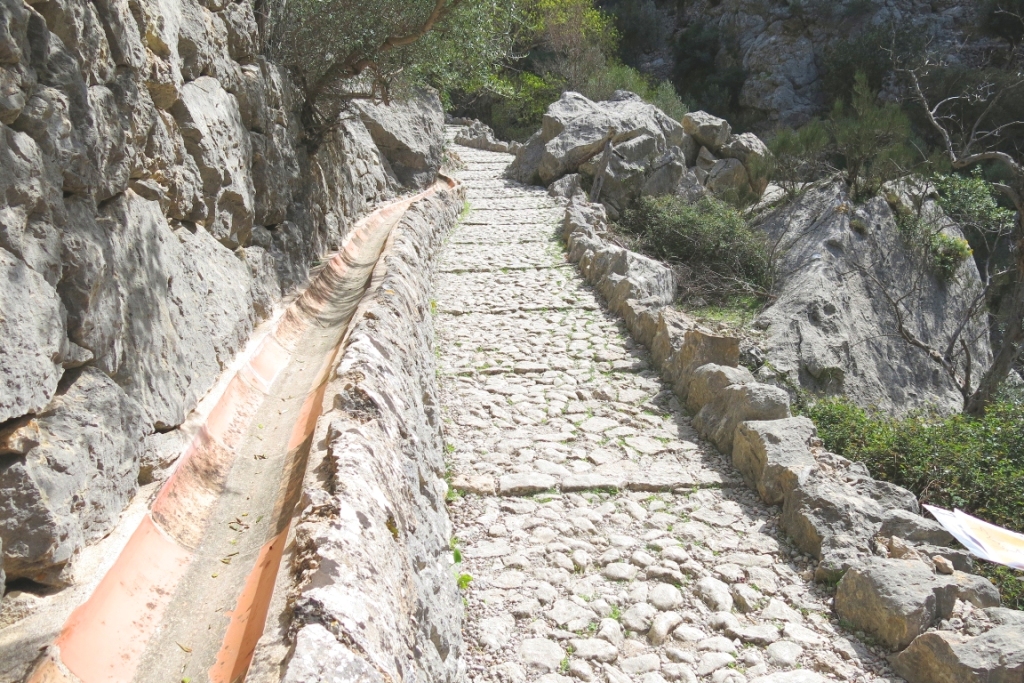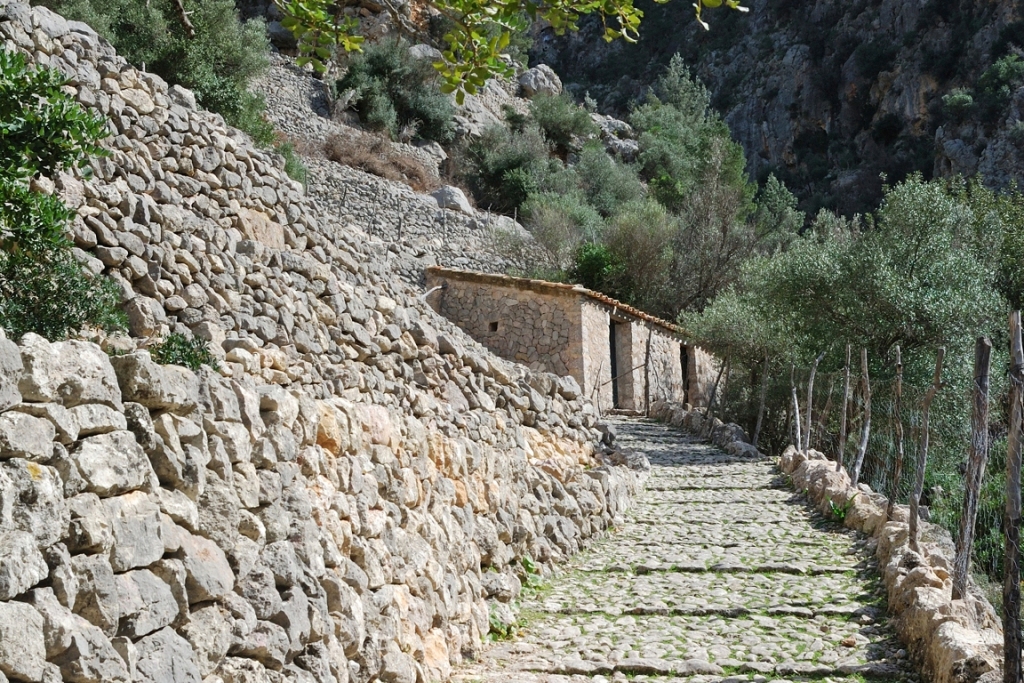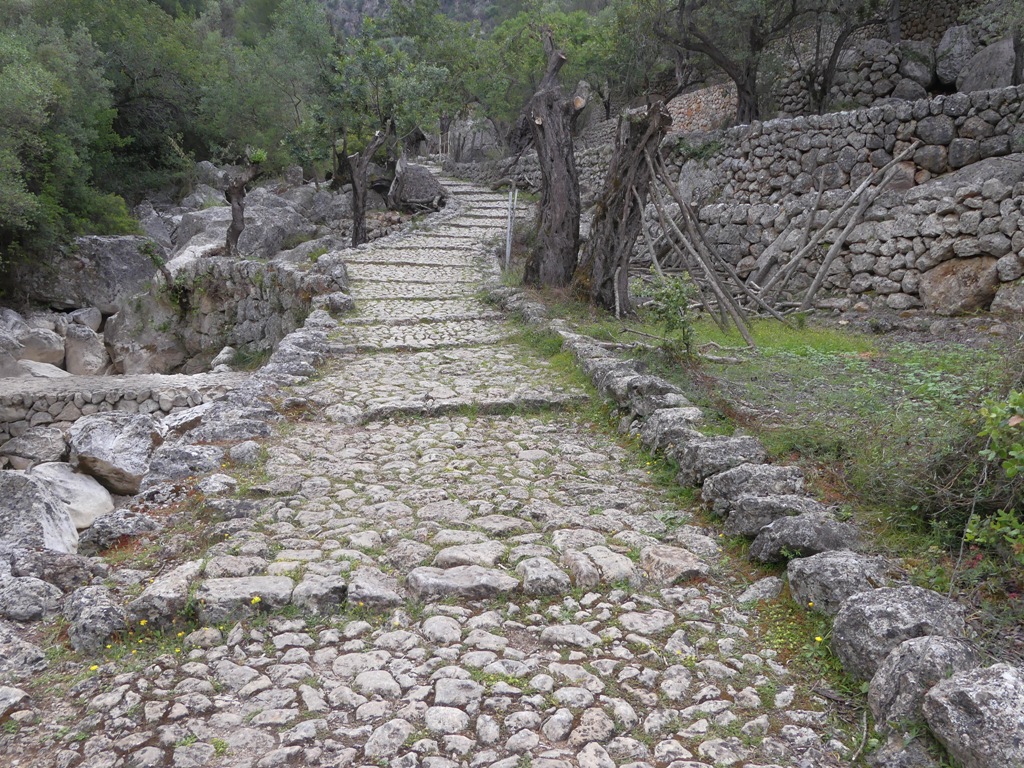Camí des Barranc de Biniaraix path
Barranc de Biniaraix cliffs are located southeast of Sóller. This area stands out because of its geomorphological traits: it is a karst canyon shaped by water draining westwards, delimitated by Es Cornadors to the south and the westernmost end of the Son Torrella mountain range to the north. The hillsides are organised into small agricultural properties that have been intensely terraced and primarily dedicated to olive cultivation as well as other dry land farming produce such as carob and almonds, but they also feature some orchards.
The Camí del Barranc was the main old way communicating the Sóller and Fornalutx valleys with those of Lofra, Cúber, Orient and the Lluc monastery. A large network of stone-paved paths (the Camí Vell, El Verger, Can Fusta, S’Aladern etc.) form the main spokes from which the terraced fields extend.
This place is an example of how dry stone constructions have been integrated into the landscape, essential for agricultural use of the land and at the same time filling functions and solving problems such as shelter, property borders, water collection, access and so on. At present the poor farming yield in the area makes agrarian production unfeasible and they are mainly for recreational use these days.
These marges have been constructed on rocky mountainsides and high slopes. Generally speaking the main characteristic of the walls is that they are not overly worked and support narrow marjades (terraced fields). This kind of construction is favoured by an array of small animals and plants that seek shelter and thrive in the spaces left between the stones. One example would be the small ferns belonging to the Asplenium genus; they have found an ideal biotope in these walls where they can develop and diversify into numerous taxa, many of them endemic or not very common. Also found here is an abundance of plants exclusive to the Mallorcan mountains, such as for example foxglove, estepa joana (Hypericum balearicum), broom, everlasting, violeta de penyal (Hippocrepis balearica) etc.
The landscape is of great environmental, historical and cultural value, and the route clearly deserves the recognition it was given in 1994 as an Asset of cultural interest (BIC) in the monument category, which includes the terraces and other dry stone elements within the protected area.




